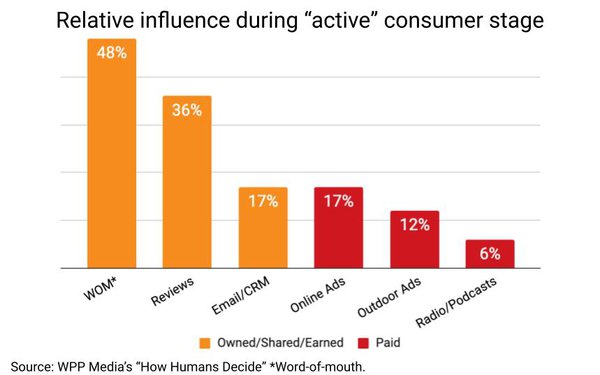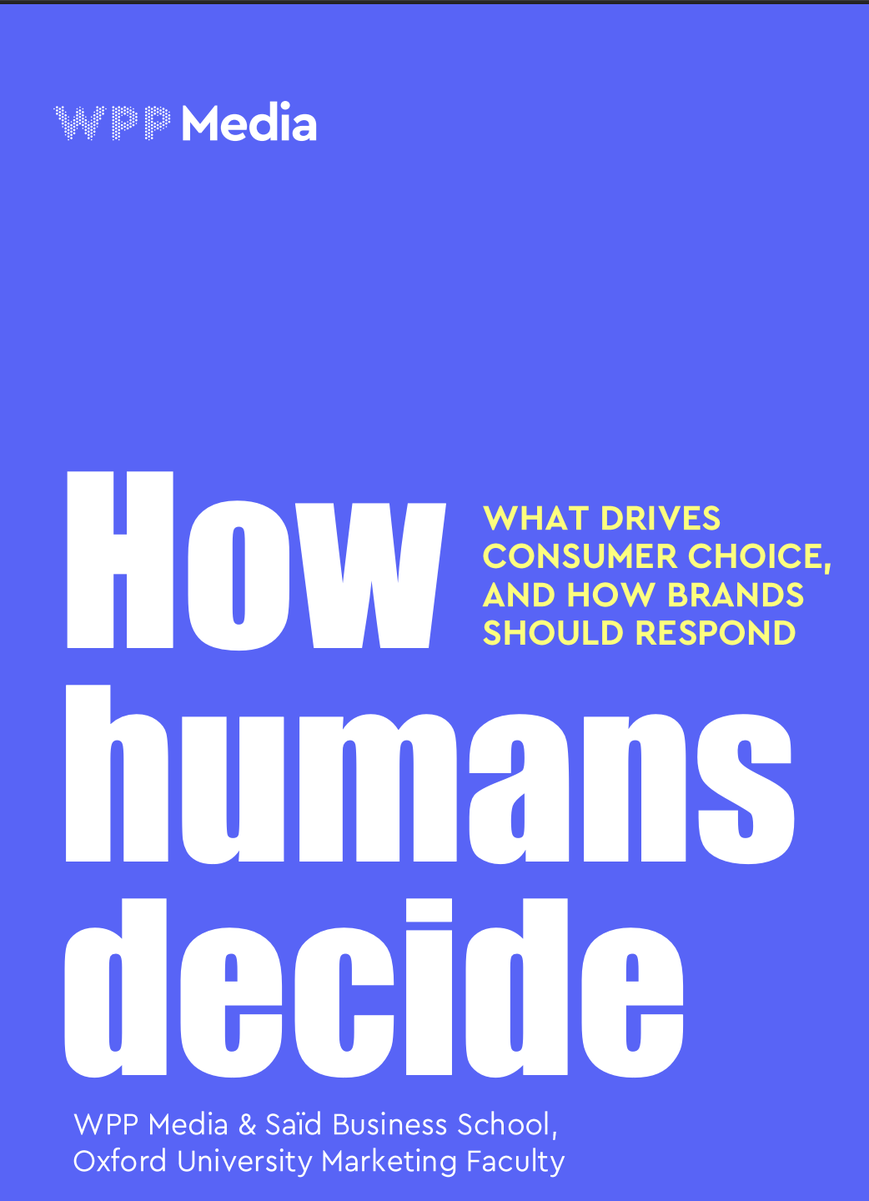
It's been quite a while since I've seen a good communications
planning research study so I was struck for a couple or reasons when the team at WPP Media passed along their just-released one conducted in partnership with the marketing faculty at Oxford
University. On reason was it's title: "How Humans Decide," which seemed like a quaint throwback
in our hyper-accelerated evolutionary AI-era, especially for an organization -- WPP Media -- which has recently seemed to be about all things AI.
But the title is also a great reminder that --
at least until we truly morph into an A2A marketing world -- its still fundamentally about how human planners and buyers place ads that influence human consumers to think about and buy their human
brand customers' products and services.
advertisement
advertisement
The second reason is also kind of quaint: The study is consistent with half a century of communications planning research in that the most effective way
to influence human consumers is with other humans. You know, by word-of-mouth.
That's not just a comforting notion, it's a scientifically-backed one, because the study's methodology draws from
WPP Media's own proprietary database of 1.3 million human purchase decisions, including their customer journeys, which the researchers divided into two stages: "priming" (how humans are preconditioned
to product preferences via exposure during their everyday life); and "active" (how they actually go about making a purchase decision once they're in market to do so).
Once activated to
actually make a purchase, the most influential medium, according to the study's findings is, well, other people. Specifically, recommendations from friends.
The study does not dive into what
constitutes a word-of-mouth friend in this era of peak influencer marketing, but I'm going to guess it falls on some kind of spectrum depending on the individual and how they interact with other
individuals they deem "friends" they trust for a product recommendation, even if -- dare I say -- they are virtual ones.
The important part is that effective communications planning still is
about generating word-of-mouth, and the good news for media agencies like WPP Media is they have a number of ways to activate that via "owned, shared and earned" communications channels.
The
bad news for traditional "paid" media channels is that they are not nearly as effective at influencing purchase decisions once a consumer is actively in market to buy something.
While the
study doesn't show the effectiveness for all media channels, it delineates three paid advertising mediums -- online ads, outdoor ads, and radio/podcast advertising.
"On average, channels
containing owned/shared/earned touchpoints are nearly three times more powerful than paid media along in converting someone from bias to purchase," the study finds, concluding, "Communications
planning must therefore include 'influence' as a planning metric, and quantify the impact of owned/shared/earned touchpoints."
In other words, communications planning 101. At least until WPP
Media releases a 2.0 version of the research in a report I expect to be titled, "How Agents Decide." Stay tuned for that.
